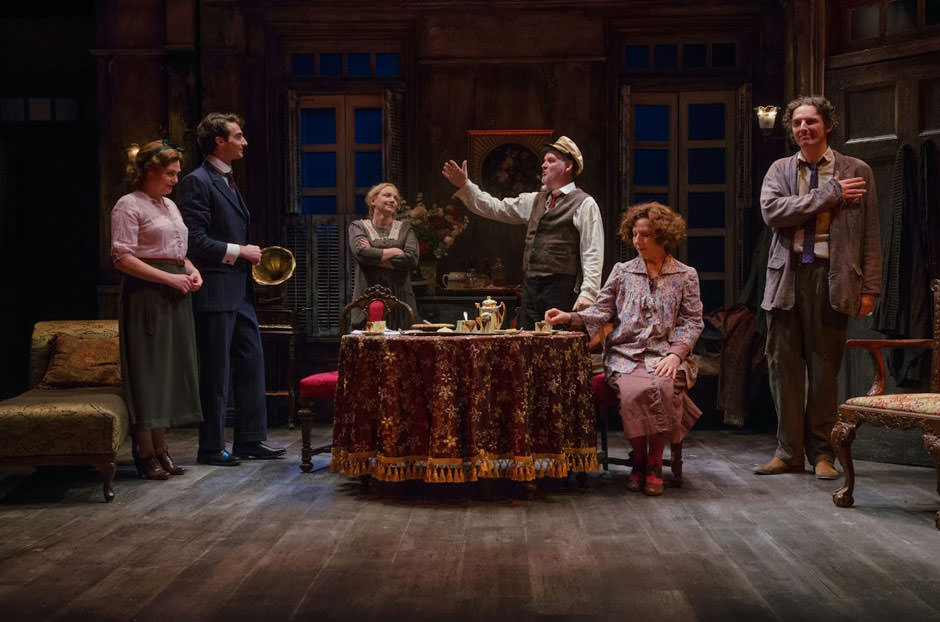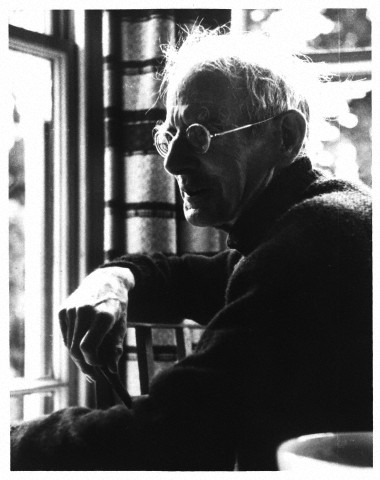After the 1924 premiere of Juno and the Paycock at Dublin’s Abbey Theatre, Sean O’Casey thanked Lady Gregory, who with William Butler Yeats served as the legendary theater’s artistic director. “You gave me encouragement,” he told her. “And it was you who said to me…‘Mr. O’Casey, your gift is characterization.’ And so I threw over my theories and worked at characters, and this is the result.”
The famously abstracted Yeats, who never met a theory he didn’t like, was always uneasy about the bawling emotion and urban squalor of O’Casey’s so-called Dublin Trilogy (the first was The Shadow of the Gunman in 1923 and the last was 1926’s The Plough and the Stars). But Juno and the Paycock immediately proved to be the Abbey’s most popular production. O’Casey wrote it in the aftermath of the civil war between supporters of the newly established Irish Free State and the “Die-Hards” who saw the treaty with Britain as rank capitulation; yet he submerged the volatile politics of the moment in the busy background of a domestic melodrama. For O’Casey, internecine bloodshed was merely one of many ways that man exhibited his capacity for folly.
Folly is here embodied by “Captain” Jack Boyle, the layabout patriarch of the tenement-dwelling Boyle clan, who with his mooching, wheedling drinking “butty” Joxer Daly expends most of his energy avoiding work. Boyle’s roaring arguments with his harried wife Juno dominate the play’s early scenes, and their rows often sound like laugh-track television. (Boyle: “Are you never goin’ to give us a rest?” Juno: “O’ you’re never tired o’ lookin’ for a rest.”) But through a series of classic narrative reversals—a vanished inheritance, an abandoned fiancée, an act of political vengeance—what starts as a rollicking lowbrow comedy becomes a bitter, deeply moving tragedy.
Director Charlotte Moore’s new production in the snug Irish Repertory Theatre negotiates the play’s difficult balance between farce and pathos with mixed success. The men are a motley assortment of loudmouths and knaves. Ciaran O’Reilly plays Boyle as a garrulous mixture of Falstaff and Ralph Kramden, while John Keating vividly brings out Joxer’s rodentine hypocrisy. Ed Malone is the pitiable son, Johnny, who lost an arm in the war for independence and mutters hollow bromides about principle, and James Russell is the foppish theosophist Charlie Bentham (Russell’s passing resemblance to a young Yeats is in keeping with the speculation that O’Casey meant Bentham as a sly dig at the poet).
Though all this masculine buffoonery is sometimes noisier than it is funny, the abrupt transformation to tragedy is carried out with startling power. It is the female leads who steal the show. Mary Mallen plays the Boyles’s intelligent daughter Mary—early on we find her reading Ibsen, a fateful sign—showing dignity and touching restraint after Bentham abandons her with a baby on the way. Supporting her is J. Smith-Cameron’s splendid Juno, whose wise, eloquent hectoring provides the play its voice of conscience. Perhaps stoic and battle-scarred characters like these are the reason Lady Gregory felt such an affinity for O’Casey; his great dramas are, in the words of Frank O’Connor, “hymns of praise to women.” As such, Juno and the Paycock is also a scathing rebuke to the fecklessness of men, and when Mary laments that her child will have no father, we feel the justice of Juno’s consoling reply: “It’ll have what’s far betther—it’ll have two mothers.”
Juno and the Paycock is playing at the Irish Repertory Theater through December 8.



